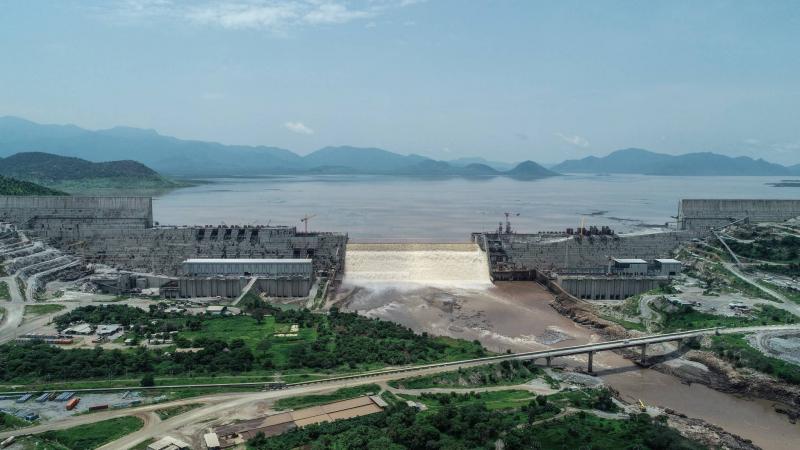The Sudanese government has sent a stern message to Ethiopia, stating that Sudan will not allow the filling and operation of the dam without a binding legal agreement that secures the safety of its installations and the lives of Sudanese citizens.
During meetings organized by the Sudanese Ministry of Resources and Irrigation for foreign ambassadors in Khartoum to explain Sudan's position on the Renaissance Dam, Sudanese Minister Yasser Abbas confirmed that "there is a direct threat to the Ethiopian Renaissance Dam on the Roseires Reservoir, which has a storage capacity of less than 10% of the capacity of the Renaissance Dam." The Sudanese minister stated, "War is not an option, and Sudan has begun early diplomatic moves to bring the international community's attention to Ethiopia's threats and the implications for half of Sudan's population living on the Blue Nile." He emphasized that his country is committed to an African solution to the crisis regarding the Ethiopian Renaissance Dam, urging the international community to convince Addis Ababa to retract its position.
Abbas stressed that "we cannot continue in this endless cycle of negotiations," pointing out the "failure of the last negotiation session among the three countries to reach an acceptable formula for continuing negotiations." The Sudanese government warned last Monday against the second filling of the Ethiopian "Renaissance Dam" before reaching an agreement with Egypt and Ethiopia, asserting in a statement that "Sudan does not accept imposed realities and the threat to the safety of 20 million Sudanese citizens whose lives depend on the Blue Nile," reiterating Sudan's principled position on the necessity of reaching a binding legal agreement on the filling and operation of the Renaissance Dam that preserves and considers the interests of all three parties.
For its part, the Egyptian Ministry of Foreign Affairs announced that the six-party meeting held on January 10 of this year to discuss the Renaissance Dam crisis failed to achieve any progress. Sudan stated that "we cannot continue what it described as an 'endless cycle' of circular negotiations, given the threat posed by the Renaissance Dam."
Ethiopia announced in 2011 its intention to construct a dam on the Blue Nile, known as the Hidase Dam, located 20-40 km from the Sudanese border, with an estimated storage capacity of about 16.5 billion cubic meters awarded directly to the Italian company Salini and initially dubbed Project X. It was quickly renamed the Grand Millennium Dam, and the foundation stone was laid on April 2, 2011, before changing its name for the third time in the same month to the Grand Ethiopian Renaissance Dam.




